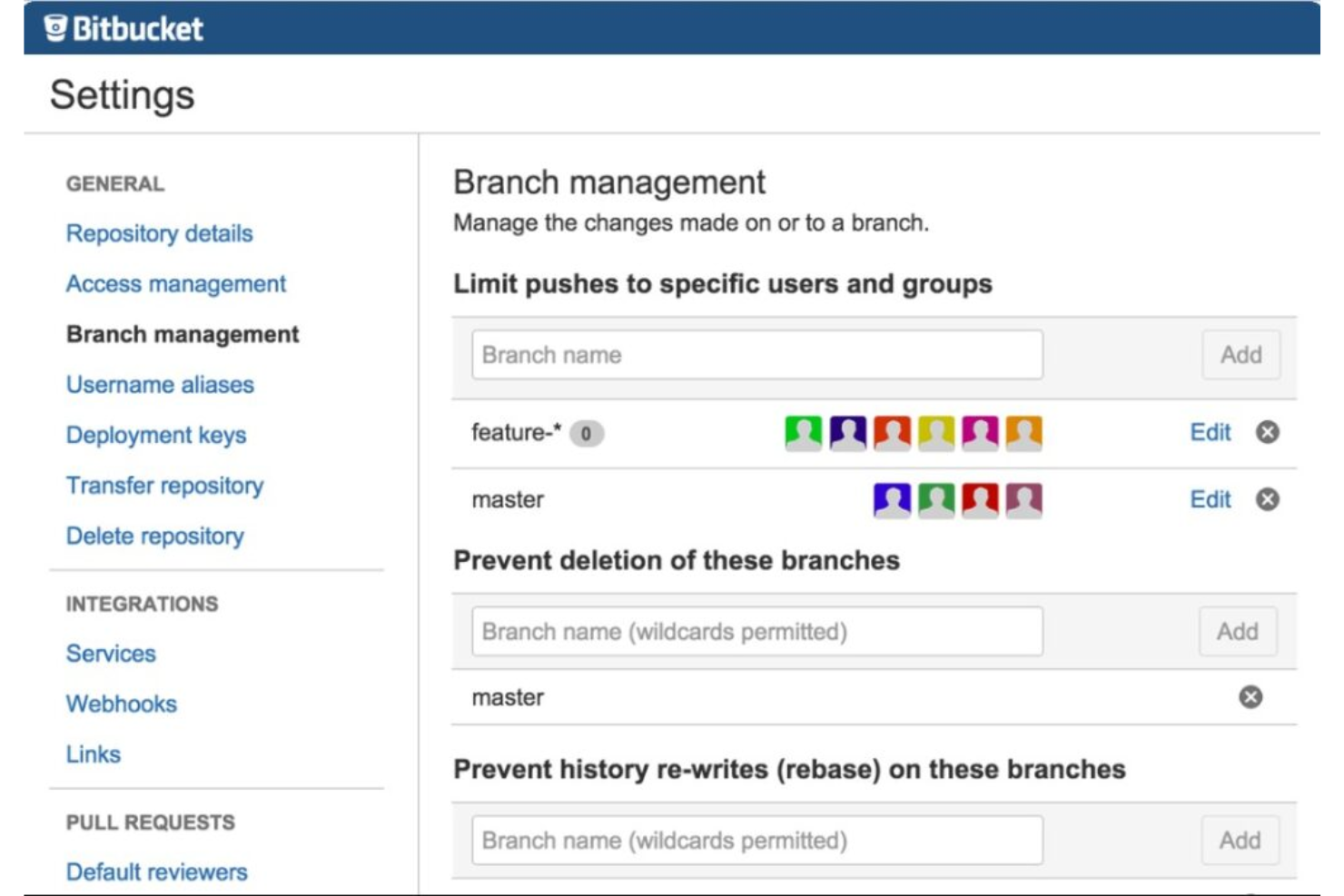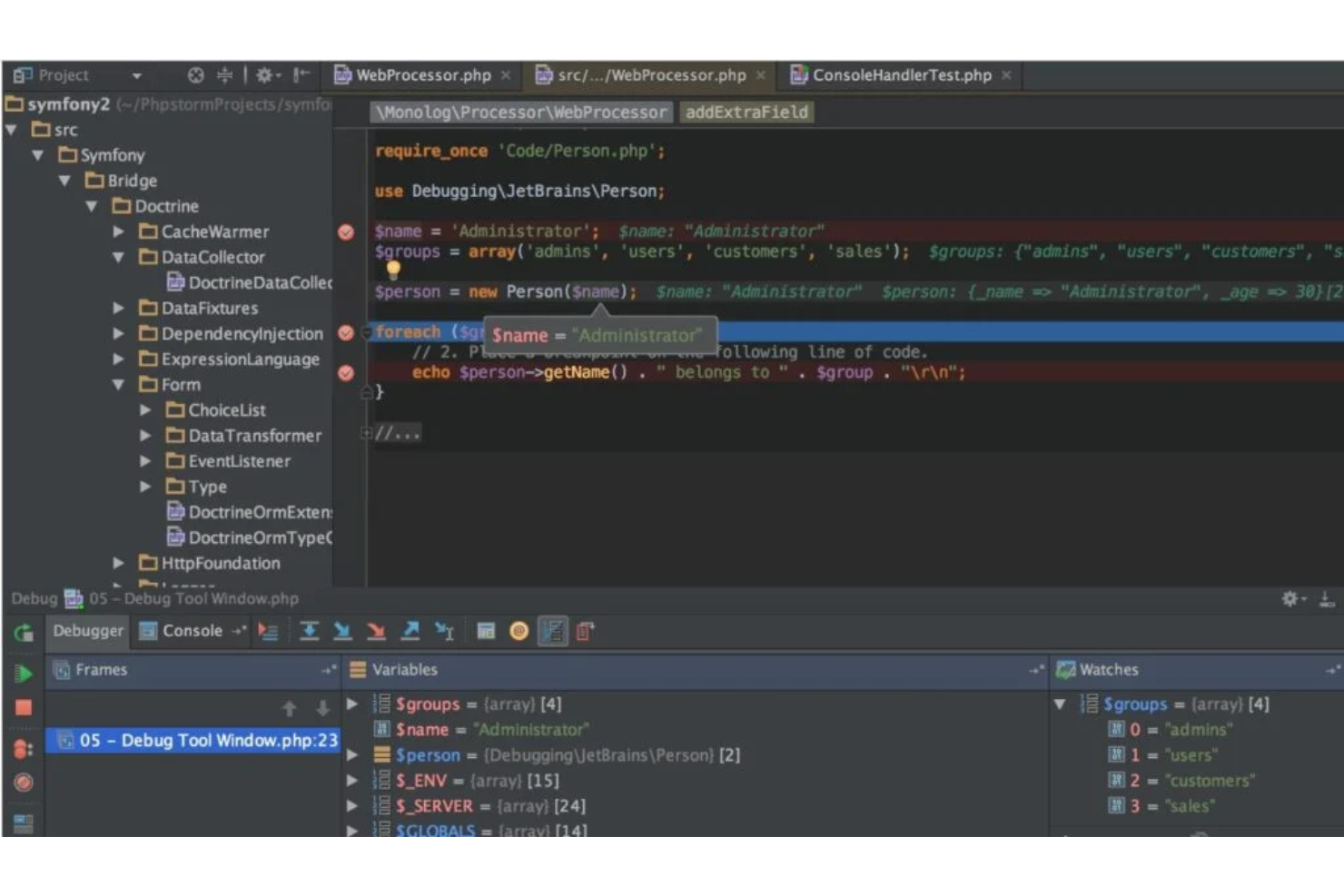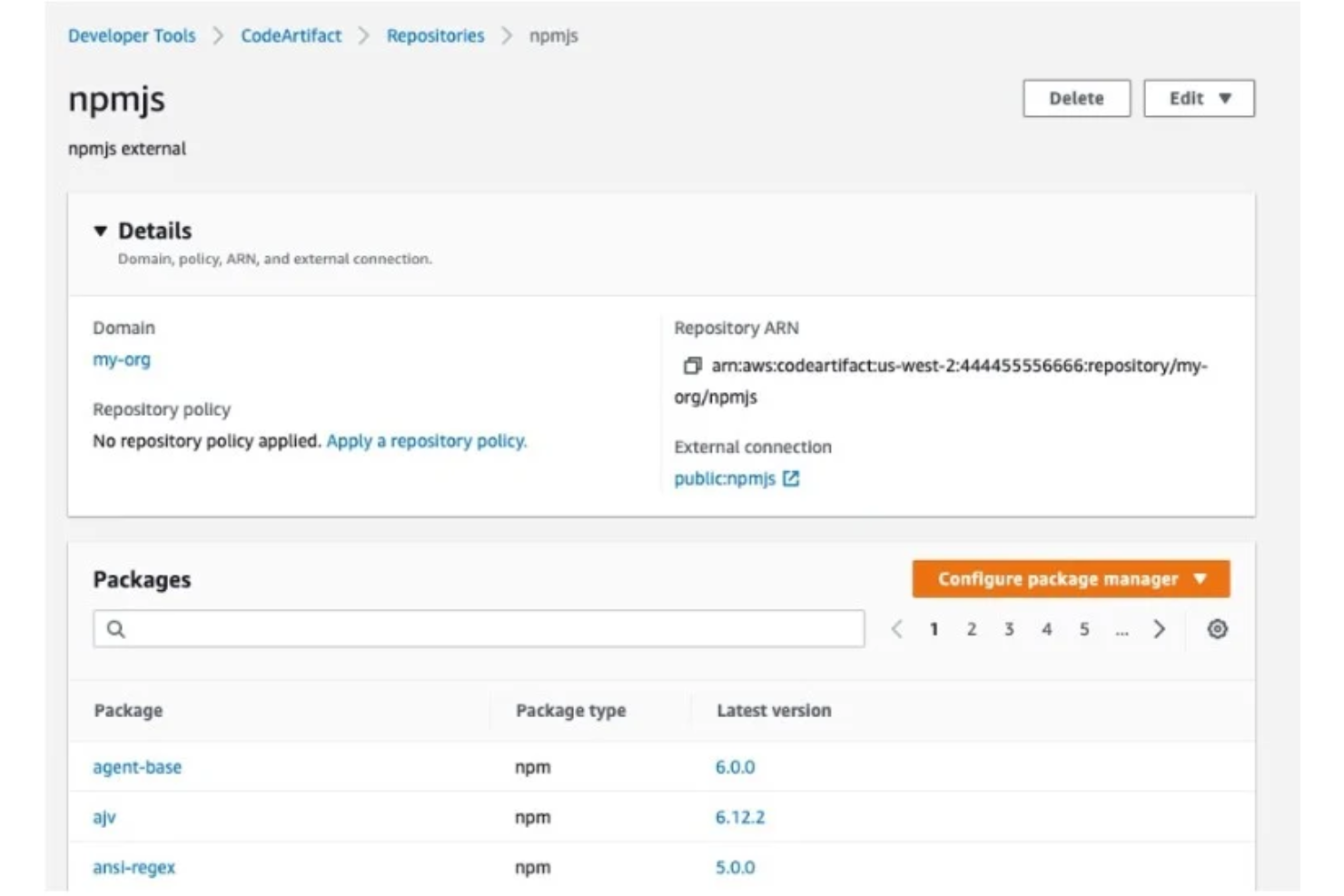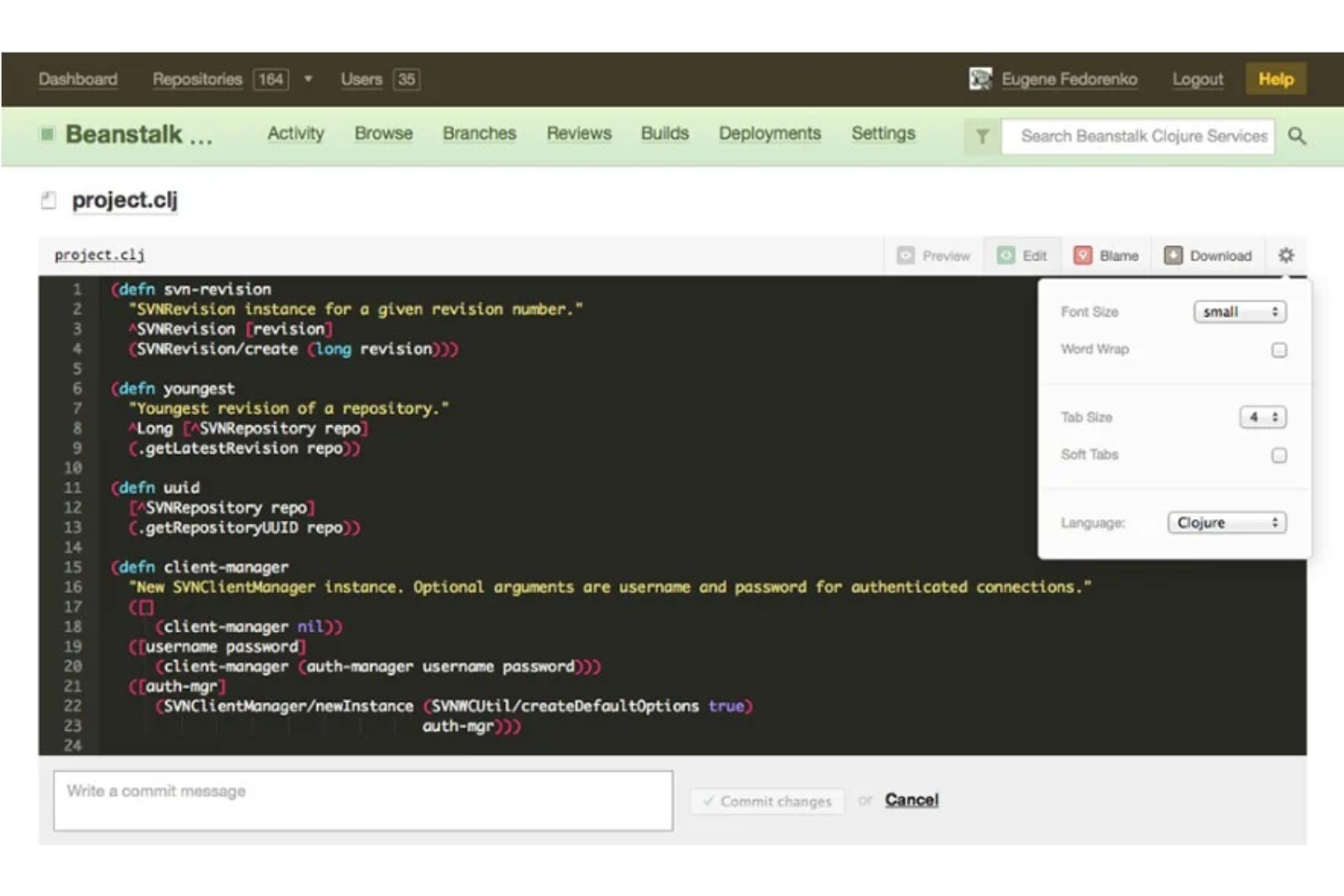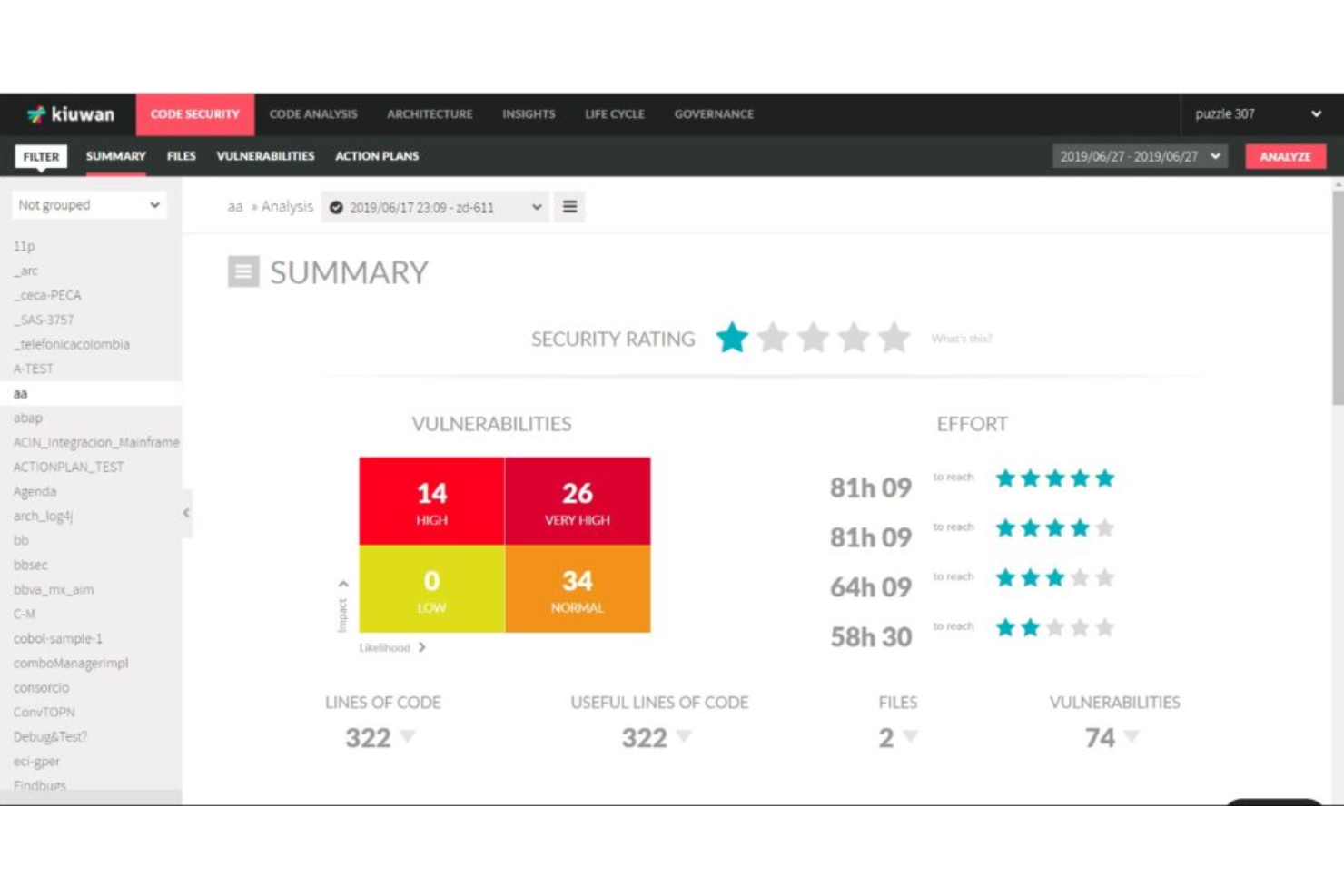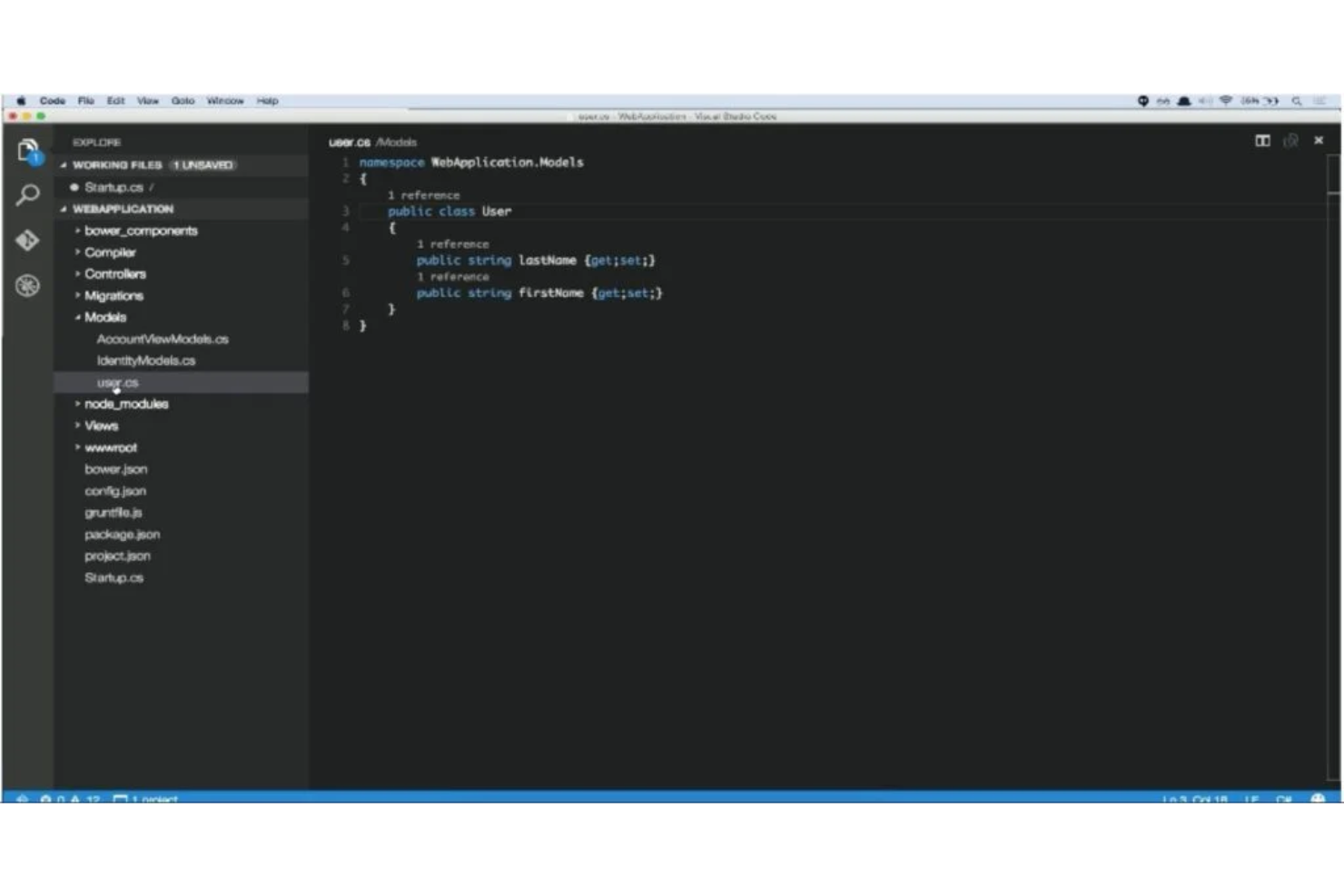10 Best Source Code Management Software to Boost Your Code Game Shortlist
Here's my pick of the 10 best software from the 24 tools reviewed.
Our one-on-one guidance will help you find the perfect fit.
Navigating the realm of source code management software, I've wrestled with the demands of both Windows and Mac systems. As someone deeply involved in software development teams, I grasp the need for efficient bug tracking, access control, and robust collaboration tools - whether you're a fan of the command line or prefer a GUI interface.
With tools like the open-source software options and team foundation server, teams can meticulously manage directories, ensuring that development projects proceed without a hitch. And believe me, it's the difference between constantly firefighting and smoothly steering software projects to success.
What Is A Source Code Management Software?
Source code management software, often termed version control software, organizes and tracks modifications to programming code. Developers use these tools to collaborate on projects, ensuring that code changes made by various team members don't conflict. Beyond collaboration, these platforms also maintain a history of code versions, allowing teams to revert to previous states if needed, merge alterations from different sources, and ensure that the final codebase remains consistent and error-free.
The primary objective is to boost efficiency, mitigate risks of overwriting, and facilitate simultaneous work on large projects. A revision control system not only empowers development teams to track changes and manage dependencies but also safeguards previous versions of software projects. Whether it's establishing precise permissions, handling dependencies, or using advanced features from open-source software, the right source code management system turns cumbersome tasks into intuitive processes.
Best Source Code Management Software to Boost Your Code Game Summary
| Tool | Best For | Trial Info | Price | ||
|---|---|---|---|---|---|
| 1 | Best for Jira software integration | Free plan available | From $3.30/user/month | Website | |
| 2 | Best for cloud-based version control | Free trial available | From $12.50/user/month | Website | |
| 3 | Best for scalability in large enterprises | Free demo available | Free plan available | Website | |
| 4 | Best for Salesforce code analysis | No | From $15/user/month (billed annually) | Website | |
| 5 | Best for PHP-specific coding environments | No | From $8.90/user/month (billed annually) | Website | |
| 6 | Best for artifact storage in the AWS ecosystem | No | From $0.09/GB/month | Website | |
| 7 | Best for centralized version control with deployment tools | No | From $15/user/month (billed annually) | Website | |
| 8 | Best for code security and compliance checks | 14-day free trial | Customized price upon request. | Website | |
| 9 | Best for combined CI/CD and code management | 30-day free trial + Free demo | From $19/user/month | Website | |
| 10 | Best for diverse language support and plugins | Not available | Free to use | Website |
-

Docker
Visit WebsiteThis is an aggregated rating for this tool including ratings from Crozdesk users and ratings from other sites.4.6 -

Pulumi
Visit WebsiteThis is an aggregated rating for this tool including ratings from Crozdesk users and ratings from other sites.4.8 -

GitHub Actions
Visit Website
Best Source Code Management Software to Boost Your Code Game Reviews
Bitbucket, developed by Atlassian, serves as a Git repository management platform. With its close ties to other Atlassian products, it offers tight integration with Jira software, providing teams with a cohesive development environment.
Why I Picked Bitbucket:
In my search for version control tools that align well with Jira, Bitbucket consistently emerged as a top contender. My decision to pick it stems from its direct affiliation with Atlassian, ensuring a built-in compatibility that others might not offer. After a thorough comparison of different platforms, I determined that for teams deeply invested in Jira, Bitbucket provides the most integrated experience.
Standout Features and Integrations:
Bitbucket stands out with its built-in continuous integration and continuous delivery (CI/CD) capabilities, making deployments efficient. It offers pull request insights and inline commenting, facilitating smoother team collaboration. Integrations are one of Bitbucket's strengths, and while Jira integration is a highlight, it also integrates easily with tools like Bamboo, Trello, and Slack.
Pros and cons
Pros:
- A range of extensions and integrations available in the Atlassian marketplace
- Inbuilt CI/CD pipelines streamline the development process
- Deep integration with Jira Software
Cons:
- Some users may find performance issues during peak times
- As the number of users grows, costs can ramp up
- The interface may seem complex for newcomers
Assembla offers a robust cloud platform to manage version control, streamlining the process of code storage and collaboration. With its cloud orientation, Assembla provides users with a centralized space for their codebases, justifying its reputation for top-tier cloud-based version control.
Why I Picked Assembla:
Among the myriad of tools I assessed, Assembla carved its niche due to its dedicated cloud environment for version control. When comparing and forming opinions on diverse platforms, Assembla's cloud-centric approach was distinct.
I chose Assembla as it offers secure, cloud-based repositories that cater to teams that prioritize remote access and collaboration. Thus, it truly stands as the best for cloud-based version control.
Standout Features and Integrations:
Assembla's primary strength lies in its secure cloud repositories which are designed to prevent code vulnerabilities. It also offers features like audit trails and IP whitelisting to improve repository security.
Integration-wise, Assembla supports key platforms like Slack, Trello, and Jira, enabling streamlined workflows and efficient communication among developers.
Pros and cons
Pros:
- Effective integrations with key project management tools
- Advanced security features like IP whitelisting
- Secure cloud repositories mitigate code vulnerabilities
Cons:
- Advanced features come with a steeper learning curve
- Migration from other platforms may require adjustments
- The interface can be initially overwhelming for some users
Perforce Helix Core is a robust version control system designed specifically to handle the demands of large-scale enterprises. Its powerful features allow it to manage vast codebases, ensuring streamlined operations even as businesses grow exponentially.
Why I Picked Perforce Helix Core:
I selected Perforce Helix Core for this list because it continuously rose to prominence in discussions concerning large enterprise needs. Its capacity to handle vast quantities of data without compromising on performance was a distinguishing factor.
After comparing various tools, I judged that Perforce Helix Core stands as the top choice when scalability in big corporations is paramount.
Standout Features and Integrations:
One of Helix Core's prime features is its fast commit and build testing, which significantly reduces integration times. Its workspace management allows users to handle multiple codebases efficiently.
Integration-wise, Helix Core smoothly interacts with tools like Jenkins, Jira, and Bamboo, ensuring that the entire development lifecycle is interconnected.
Pros and cons
Pros:
- Easy integration with a variety of development tools
- Efficient workspace management for multiple codebases
- Exceptional performance even with vast data sets
Cons:
- Its rich feature set can present a steeper learning curve
- The interface might not be as user-friendly for beginners
- Might be overwhelming for smaller teams or startups
CodeScan is a dedicated static code analysis tool tailored specifically for Salesforce codebases. Its capabilities ensure that Salesforce developers are equipped with the essential tools and insights needed to maintain code quality and enforce best practices.
Why I Picked CodeScan:
During my comprehensive search for Salesforce code analysis tools, CodeScan consistently emerged at the forefront. Through a process of judging and comparing, I found its specificity to Salesforce to be its standout trait. Its deep integration with the Salesforce platform is what truly differentiates it.
I chose it primarily because of its adeptness at addressing the unique challenges presented by Salesforce, justifying its title as 'best for Salesforce code analysis.'
Standout Features and Integrations:
CodeScan impresses with its extensive rule set, numbering over 350 rules, ensuring thorough and precise code reviews. Additionally, its ability to visualize technical debt helps teams prioritize refactoring tasks.
For integrations, CodeScan connects with key developer tools and platforms such as GitHub, Bitbucket, and Azure DevOps, enhancing its utility in diverse developer ecosystems.
Pros and cons
Pros:
- Broad integration capabilities with major developer platforms and tools
- Visualization capabilities aid in understanding and addressing technical debt
- Extensive rule set tailored for Salesforce development ensures thorough code reviews
Cons:
- Requires consistent updates to keep in line with Salesforce's frequent releases
- Specificity to Salesforce may limit its applicability in multi-platform projects
- Might have a learning curve for developers unfamiliar with static code analysis
PhpStorm is an integrated development environment (IDE) specifically tailored for PHP developers. Offering deep code understanding, top-notch coding assistance, and support for all PHP tools, it is widely recognized for providing an environment improved for PHP development.
Why I Picked PhpStorm:
In my quest for the most comprehensive PHP-specific tool, PhpStorm consistently emerged at the forefront. I chose it due to its unmatched dedication to PHP development and its suite of features that ease coding in PHP. For developers who require an environment tailored for PHP, PhpStorm, in my judgment, is the standout choice.
Standout Features and Integrations:
Among the myriad features of PhpStorm, its deep code understanding ensures developers can work with legacy code and large codebases effectively. The tool offers on-the-fly error prevention, autocompletion, and refactoring capabilities, which aid in producing clean, maintainable code.
Furthermore, its integration capabilities allow developers to work with databases, version control systems, and other essential tools directly from the IDE.
Pros and cons
Pros:
- Customizable interface that allows developers to improve their workspace
- Integration with tools like Composer and PHPUnit for comprehensive PHP development
- Deep understanding of PHP code, aiding in effective debugging and error prevention
Cons:
- Occasional delays during updates and patches
- Consumes more system resources compared to lightweight editors
- Might be overkill for simple PHP projects or beginners
AWS CodeArtifact is a managed artifact repository service that lets developers share and reuse software components within their organization. Given its deep integration into the AWS landscape, it becomes the go-to choice for artifact management for teams already embedded in the AWS ecosystem.
Why I Picked AWS CodeArtifact:
When choosing tools for this list, AWS CodeArtifact caught my attention due to its integration within the AWS framework. Its specialized design to cater to AWS users makes it distinct from other artifact repositories. I hold the perspective that for teams already on AWS, having an in-house solution like CodeArtifact can streamline processes.
This aligns with its unique selling proposition as the 'best for artifact storage in the AWS ecosystem.'
Standout Features and Integrations:
AWS CodeArtifact stands out for its ability to store software packages from various package managers, ensuring versatility for developers. The tool supports npm, PyPI, and Maven repositories, giving a wide spectrum of artifact management capabilities.
In terms of integrations, it is designed to work effortlessly with tools in the AWS suite like AWS CodeBuild and AWS CodePipeline.
Pros and cons
Pros:
- Managed service, removing the need for infrastructure management
- Supports a wide range of package managers including npm, PyPI, and Maven
- Deep integration with the AWS toolset, ensuring cohesive workflows
Cons:
- Limited third-party integrations outside of the AWS ecosystem
- The pricing model can be more complex than flat-rate competitors
- Might be overkill for teams not heavily invested in AWS
Beanstalk efficiently fuses centralized version control with robust deployment tools, presenting a cohesive environment for code management and release. Its unique proposition lies in merging the often siloed processes of version control and deployment, aptly matching its 'best for' designation of centralized control with deployment mechanisms.
Why I Picked Beanstalk:
During my selection process, Beanstalk caught my attention due to its rare combination of version control and deployment facilities. It’s the coalescence of these functionalities that distinguishes Beanstalk from others. In a landscape where tools often focus on just one strength, Beanstalk's duality in serving both version control and deployment made it a compelling choice.
This is why I believe it's best suited for those desiring centralized version control paired with deployment utilities.
Standout Features and Integrations:
Beanstalk shines with features like code reviews, release notes, and notifications, ensuring team members remain in sync. Deployment environments can be set up with ease, supporting multiple environments from staging to production.
For integrations, Beanstalk melds well with popular platforms like Slack, Trello, and Jira, simplifying cross-tool workflows.
Pros and cons
Pros:
- Easy integration with popular workflow tools
- Extensive features for code reviews and notifications
- Efficiently combines version control and deployment
Cons:
- Limited customization options compared to standalone deployment platforms
- Advanced deployment features might be overkill for smaller projects
- Requires some learning curve for new users
Kiuwan is a software analytics platform focusing on enforcing coding standards and detecting vulnerabilities. Catering primarily to businesses and developers, its core strength lies in code security and ensuring compliance with various coding and industry standards.
Why I Picked Kiuwan:
While exploring tools that emphasize code security, Kiuwan's reputation for rigorous compliance checks consistently stood out. I selected it due to its extensive set of features that prioritize not just security but also code quality. From my analysis, I've determined that for organizations that prioritize both coding standards and security, Kiuwan is the most appropriate choice.
Standout Features and Integrations:
Kiuwan brings to the table an in-depth code security analysis, detecting vulnerabilities across multiple programming languages. Its Life Cycle tool aids in end-to-end application security, from source code to software composition. Additionally, its integrations are tailored to fit easily into most SDLC tools, enhancing its usability.
Pros and cons
Pros:
- Extensive dashboard and reporting capabilities, aiding in audit and compliance
- Ability to define custom rules for checks, ensuring flexibility
- Comprehensive security analysis spanning multiple languages
Cons:
- Limited community support compared to some competitors
- Some users might find the interface less intuitive
- Steeper learning curve for newcomers to software security analysis
GitLab serves as a comprehensive platform, offering both continuous integration/continuous deployment (CI/CD) capabilities and robust code management solutions. Its integrative approach offers developers an experience, merging code repository management with CI/CD, aligning well with its reputation for being 'best for combined CI/CD and code management.'
Why I Picked GitLab:
In the realm of code management and CI/CD platforms, my selection of GitLab was driven by its all-encompassing approach. I determined that among the array of tools available, GitLab truly stands out due to its ability to merge two crucial aspects of the development process.
I've always held the opinion that efficient development requires tools that reduce context switching, and GitLab's combined functionality does precisely that, making it the 'best for combined CI/CD and code management.'
Standout Features and Integrations:
GitLab boasts an integrated CI/CD system that automates the software delivery process. Its Auto DevOps feature automatically configures CI/CD pipelines, reducing manual setup efforts. Integration-wise, GitLab is compatible with popular platforms like Kubernetes, making container orchestration straightforward and efficient.
Pros and cons
Pros:
- Robust Kubernetes integration aids in container orchestration
- Auto DevOps reduces the need for manual CI/CD configurations
- A comprehensive platform that combines CI/CD and code management
Cons:
- Some users may prefer dedicated tools for CI/CD and code management
- The extensive suite of tools might introduce a learning curve for newcomers
- Can be overwhelming for users seeking simpler, standalone solutions
Visual Studio Code (VS Code) is a lightweight, powerful source code editor developed by Microsoft. It's renowned for its broad language support and expansive library of plugins, making it a versatile choice for developers across different languages and frameworks.
Why I Picked Visual Studio Code:
I selected Visual Studio Code for this list after comparing it with many other code editors. One of the primary determinants was its unmatched support for a myriad of programming languages out of the box.
Additionally, the extensibility through its vast marketplace of plugins is exceptional. These combined attributes positioned it as the 'best for diverse language support and plugins.'
Standout Features and Integrations:
Visual Studio Code shines with features like IntelliSense for code completion, debugging capabilities straight from the editor, and Git commands built-in. Its marketplace boasts thousands of extensions, allowing customization and improvements to fit any developer's needs.
Integration-wise, it melds well with popular frameworks, libraries, and cloud services, offering a holistic development experience.
Pros and cons
Pros:
- Built-in Git commands streamline version control tasks
- Massive marketplace for extensions catering to various development needs
- Comprehensive language support ensures adaptability
Cons:
- Some advanced features require familiarity with configurations
- Performance can occasionally lag with multiple extensions
- Might be overwhelming for beginners due to the numerous features
Other Best Source Code Management Software to Boost Your Code Game
Below is a list of additional source code management software that I shortlisted but did not make it to the top 10. These are definitely worth checking out.
- Sourcetree
For intuitive Git GUI interactions
- Plastic SCM
For visual versioning and distributed teams
- Codacy
Good for automated code review and code quality monitoring
- RhodeCode
Good for unified management of Git, Mercurial, and Subversion
- IBM Rational ClearCase
Good for enterprise-level configuration management
- Mercurial SCM
Good for efficient handling of large projects
- Azure DevOps
Good for end-to-end project management in the Microsoft ecosystem
- Subversion
Good for centralized version control with atomic commits
- GitKraken
Good for a visually appealing Git GUI
- SmartSVN
Good for a graphical interface on top of Apache Subversion
- AWS CodeCommit
Good for scalable source control in the AWS cloud
- SourceGear Vault
Good for teams transitioning from Visual SourceSafe
- Team Foundation Version Control (TFVC)
Good for centralized version control in the Azure environment
- Git
Good for decentralized version control and collaboration
Selection Criteria For Choosing Source Code Management Software
When selecting version control and code review tools, the sheer number of choices available can be overwhelming. Through my journey, I've tested various tools, delving deep into their capabilities, and attempting to discern the aspects that truly matter. I tried out more than 15 tools, and what you see on this list are my favorites.
I've evaluated many tools, but in this case, I was really looking for integration and usability, which I'll explain further below.
Core Functionality
- Version Control: Ability to track and manage changes to the source code.
- Collaboration: Enable multiple developers to work on the same project without conflicts.
- Branching and Merging: Facilitate the creation of branches for features or releases and easy merging of these branches.
- History Tracking: View the change history, including who made changes and when.
- Code Review: Facilitate peer reviews to ensure code quality.
Key Features
- Integration Capabilities: The tool should integrate well with other software development tools and platforms.
- Security Measures: Features like role-based access, encryption, and two-factor authentication to protect code integrity.
- Notifications: Real-time notifications for code changes, review requests, and merge approvals.
- Backup and Restore: Automatic backups of the repository and straightforward restoration processes.
- Cloud vs. On-Premise: Options for cloud-hosted or on-premise deployments depending on company needs.
- Conflict Resolution: Tools and processes to help resolve code conflicts during merges.
Usability
- Intuitive Interface: For version control tools, clear visualization of branches, merges, and commit history is crucial. It helps in understanding the project timeline and changes.
- Easy Onboarding: Given the technical nature of these tools, a step-by-step guide, tutorial, or wizard can make the initial setup smoother for users.
- Drag-and-Drop Capabilities: Especially useful for tasks like comparing branches or initiating code reviews.
- Customizable Dashboard: A dashboard that can be customized to show notifications, recent changes, or tasks, ensuring users see what matters most to them at a glance.
- Accessible Support: An extensive documentation library, coupled with responsive customer support, is essential to address queries and challenges.
Most Common Questions Regarding Source Code Management Software
What are the key benefits of using source code management software?
Source code management (SCM) tools offer several advantages:
- Version Control: They keep track of every modification to the code in a special kind of database, ensuring that if a mistake is made, developers can turn back the clock and compare earlier versions of the code.
- Collaboration: Multiple developers can work on the same project simultaneously using code collaboration tools, without stepping on each other’s toes.
- History Tracking: They provide a detailed log of who made changes when they made them, and why, which can be particularly helpful for debugging purposes.
- Branching and Merging: Developers can create branches to work on separate tasks and later merge these changes into the main code.
- Backup: In case of any mishaps, such as codebase getting corrupted or deleted, it’s always available in the SCM.
How much do source code management tools typically cost?
The pricing for SCM tools varies widely based on factors like features, scalability, and whether they’re cloud-based or on-premise. Typically, you can expect to pay anywhere from $0 to several thousands of dollars per month.
What are the typical pricing models for these tools?
There are a few common pricing models for SCM tools:
- User-Based Pricing: You pay based on the number of users or collaborators.
- Repository-Based Pricing: Pricing is based on the number of repositories you maintain.
- Tiered Pricing: Different features come with different pricing tiers, usually segmented as basic, intermediate, and premium.
- Freemium: Some tools offer basic functionality for free and charge for advanced features.
What's the typical range for SCM software pricing?
While some tools offer free tiers or start as low as $5 per user per month, more advanced enterprise solutions can cost thousands of dollars monthly, depending on the scale and features.
Which are the cheapest and most expensive SCM tools?
This can vary based on new SCM tools entering the market and existing tools adjusting their pricing. However, as of my last update, tools like Git and Mercurial SCM have free versions. On the expensive end, enterprise solutions from providers like IBM Rational ClearCase can be on the higher side, often requiring a quote for exact pricing.
Are there any free options available?
Yes, several SCM tools offer free versions. Git, for instance, is open-source and free to use. Similarly, Mercurial SCM is also free. However, it’s worth noting that while the core functionality might be free, some additional features or integrations might come at a cost.
Other Source Code Management Software Related Reviews
- Software Development Tools
- Static Code Analysis Tools
- Code Analysis Tools
- Code Review Tools
- Software Development Tracking Tools
Summary
In summary, choosing the right source code management software hinges on understanding your specific requirements, the collaboration needs of your team, and the scale of your projects. These tools streamline the software development process, facilitate teamwork, and provide safeguards against mistakes.
Key Takeaways
- Know your needs: Before diving into any tool, outline the core functionalities you require. Whether it's version control, collaboration features, or branching and merging capabilities, each tool excels in different areas.
- Cost vs. value: While pricing is an essential consideration, ensure you're also assessing the value each tool provides. Some free options might offer immense value, while certain paid ones could have the exact features you need.
- User experience matters: Beyond the technical features, a tool's usability can greatly influence team productivity. Look for tools that align with your team's skillset and offer intuitive interfaces, efficient onboarding, and responsive customer support.
What Do You Think?
The world of source code management software is vast and ever-evolving. While I've endeavored to provide a comprehensive list, there might be some hidden gems I've overlooked. If you have recommendations or have had a noteworthy experience with a tool not mentioned here, please share it in the comments or reach out.
Your insights are invaluable, and I am always eager to learn from my readers and update my guides accordingly.















